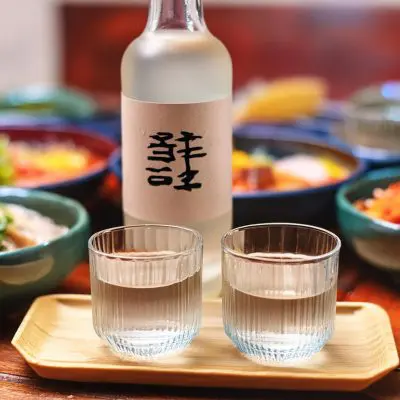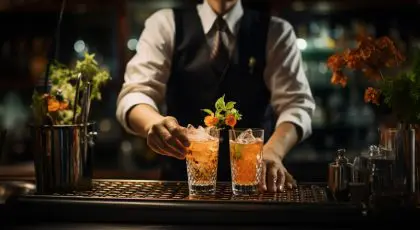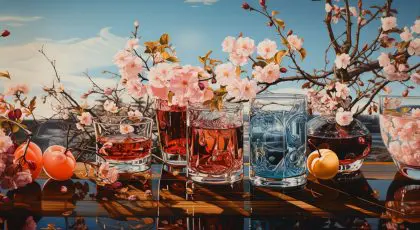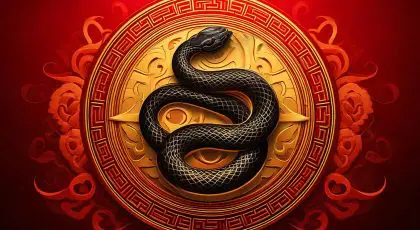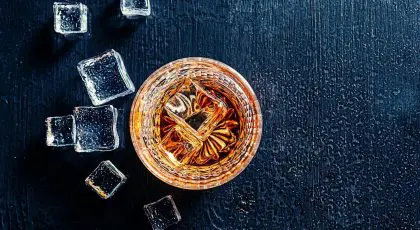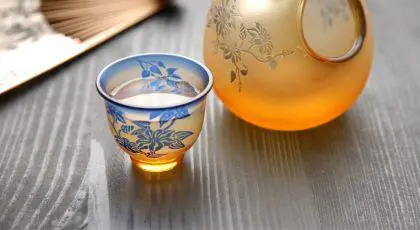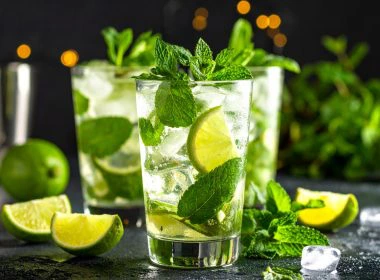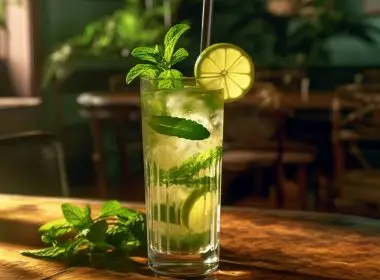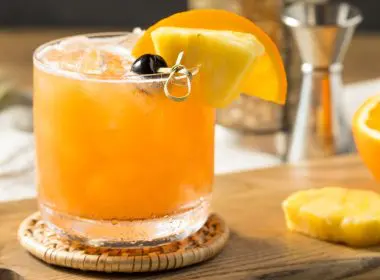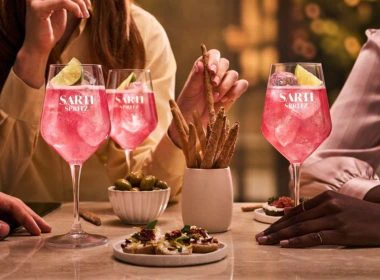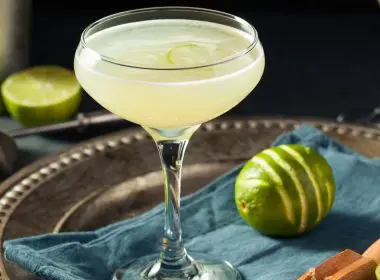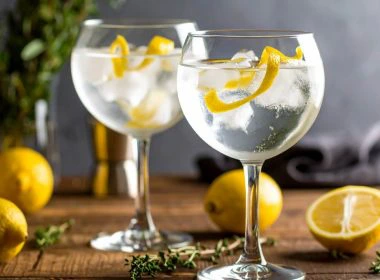Understanding Korean Drinking Culture: Customs, Drinks and Etiquette
Jump to:
Long gone are the days when Korea and its culture felt like a distant world. Thanks to the rising popularity of K-dramas and K-pop bands in the mainstream, our curiosity has peaked towards this technicolor land. And while Korean foods and ingredients are already popular and widely available in the West, there’s still a world of traditional beverages to discover. Whether you’re a seasoned soju sipper or a curious newcomer, this is your passport into the enticing world of Korean drinking culture.
Traditional Korean drinks
The first stop is traditional Korean drinks and spirits. The key ingredient is rice, which becomes a versatile base for spirits and wines. Let’s have a closer look.
Soju
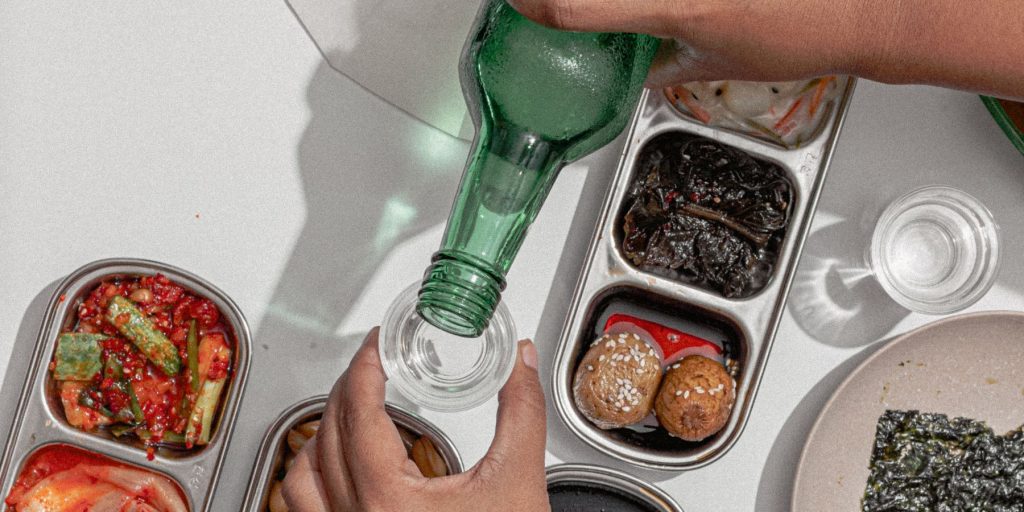
On the top of the list, we find soju, the most popular spirit in Korea. ‘Soju is definitely the main beverage attraction,” says Laki Yoo, Keepers’ bar owner and Korea Bartenders Guild delegate (opens in new window). “Being the number-one consumed beverage in the country, it is available everywhere, and we have so many varieties of it, ranging from traditional to fermented makgeolli and cheongju; once you get here, you can’t leave without trying somaek [a cocktail mixing soju and beer], the soju bomb!’.
The traditional recipe consisted of rice, water, and nuruk (a typical fermentation starter), but these days soju tends to be a neutral spirit mixed with sweeteners, with an average ABV between 12-20%.
This spirit has a crisp but mild flavour, akin to an easy-to-sip vodka, and you might have seen it in many popular K-dramas. Koreans describe soju as clean-tasting, sweet, or smooth. If you want to drink it the right way, here are some tips and tricks to master soju etiquette:
- Keep it chilled. Refrigerating soju at least one hour before consumption improves its taste by mellowing the alcohol burn.
- Use the right glassware. You should always pour it in small 60ml shot glasses, even better if you have soju shot glasses.
- Don’t serve yourself. Fill your guests’ glasses first, then pass the bottle and let someone else do the same for you.
- Drink neat. Custom says you should down the first shot straight, then refill and sip the next one at a more leisurely pace.
If you’re wondering what foods go well with soju in between sips, there’s a whole category dedicated to it called anju. This term refers to salty, whole foods like dried shredded fish, soups, or meaty dishes like kong-bul. Look for rich dishes that will stand up to the spirit’s bracing clarity.
Makgeolli
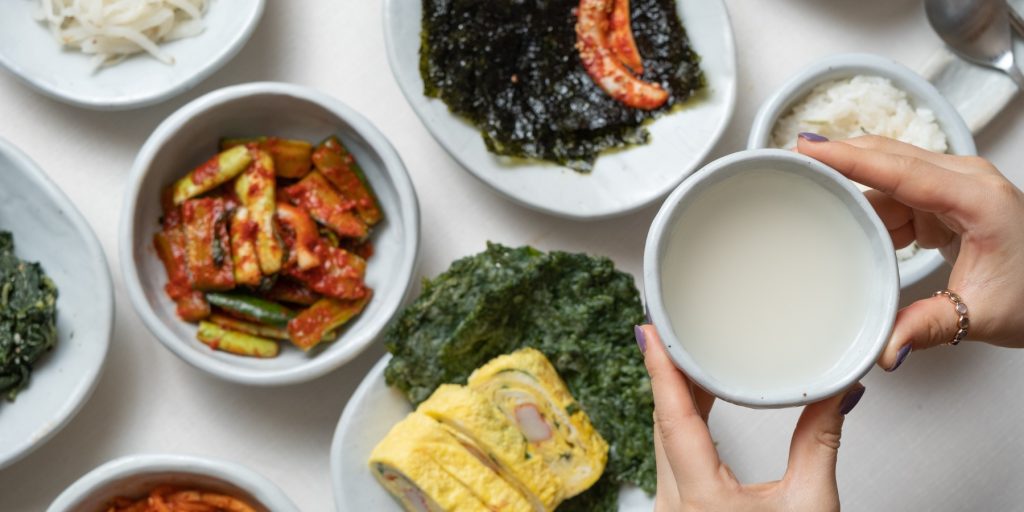
Makgeolli, also known as makkoli, is a traditional unfiltered rice wine sporting a cloudy, milky appearance. This low-alcohol beverage is one of the oldest drinks in Korea and is traditionally considered a farmer’s drink.
It’s usually made using rice and nuruk, although sometimes other grains like wheat and barley can be used to confer other flavour characteristics. Since it’s unfiltered and fermented, you should consume makgeolli within a week or two after production.
When it comes to its flavour profile, it’s sweet and tart. Since it doesn’t contain tannins from grapes, makgeolli boasts a creamy mouthfeel, making it perfect for taming the spicy intensity of many Korean dishes. Winning food pairings with this rice wine include kimchi fried rice, Korean pork belly, and grilled squid.
Bokbunja (Korean raspberry wine)
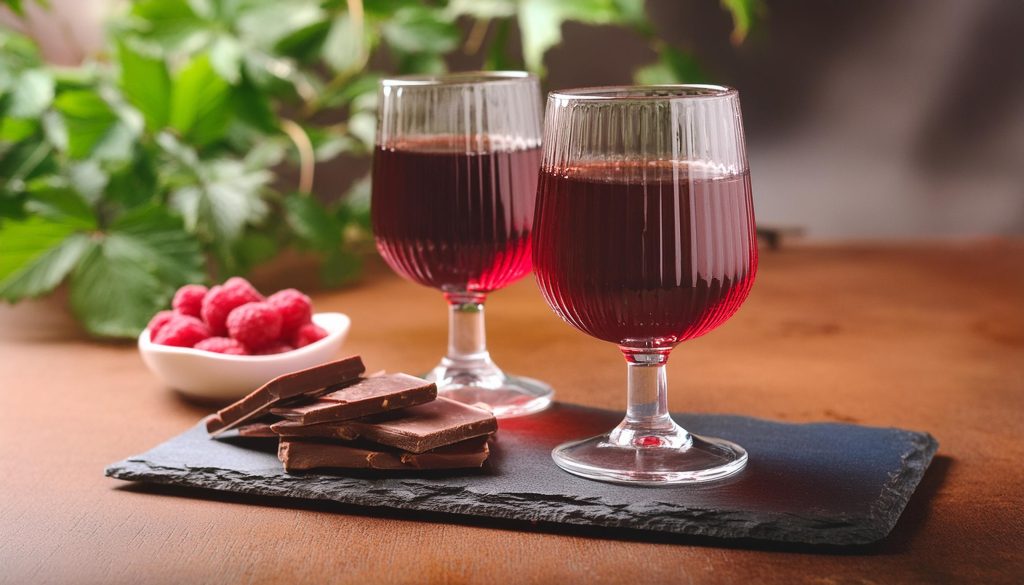
We stay on the wine side with bokbunja, which is made from Korean wild black raspberries. Local residents have loved this drink for decades, and its potential antioxidant effects have led to its current surge in popularity. This wine is characterised by deep red colour and it’s moderately sweet, with an ABV between 15 and 19%.
Make sure you refrigerate your bokbunja before serving, at the ideal temperature of 2°C. It goes as well solo as well as mixed with soju or any spirit that goes well with a dark fruit flavour. You can also add a splash or two of club soda to enhance the wine’s rich profile. Due to the high acidity of the blackberries, bokbunja goes down a treat with lightly seasoned seafood dishes, like oysters, sashimi, or broiled eel.
Other popular Korean drinks
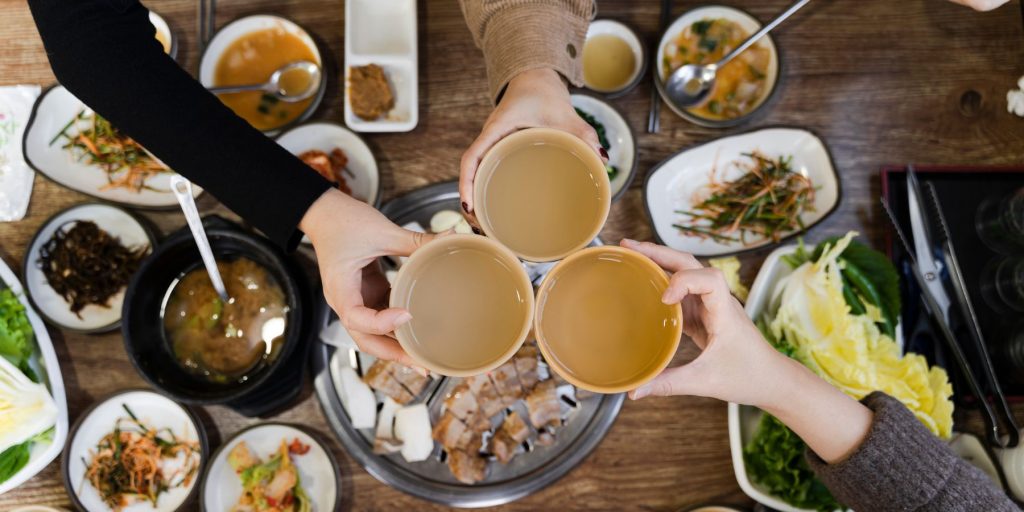
Beyond these popular options, there’s a whole world of Korean drinking culture yet to become mainstream. Let’s discover some of the undiscovered gems you can flaunt at your next dinner party:
- Gukhwaju. This traditional rice wine comes with a twist. It’s flavoured with dry chrysanthemum flowers, that give it an herbal finish and aftertaste.
- Maesil-ju. Another fruit-based alcoholic beverage, maesil-ju, is a plum wine made by infusing soju with yellow or green plums.
- Maekju. Maekju is the Korean term for beer, which was introduced to the country in the early 20th Currently, the market is dominated by two local Seoul-based breweries, and there’s a rising trend of home-brewing.
Korean drinking customs and etiquette
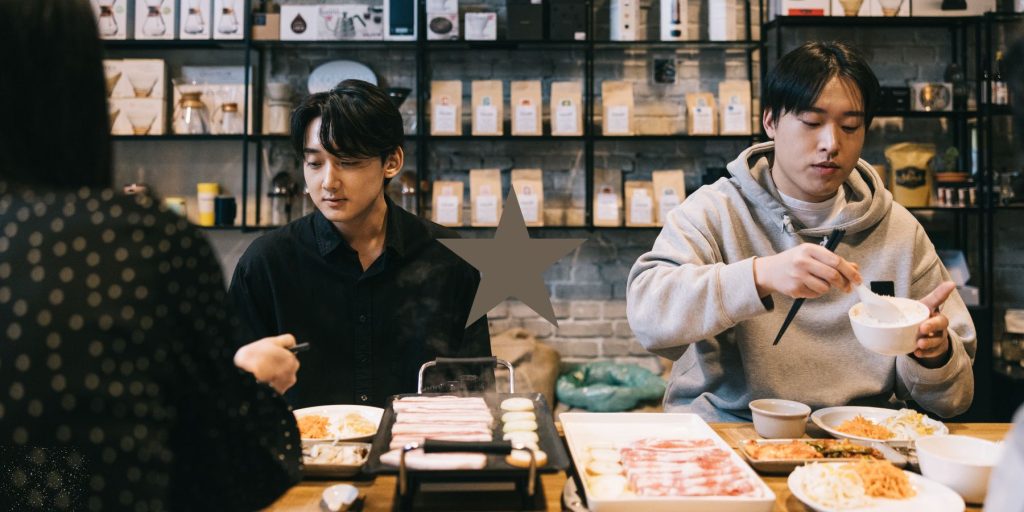
Drinking is a big part of Korean social life, and it’s believed to be a bonding experience that can foster relationships with others. Whether you’re on a business trip and have been invited to a hoesik (dinner and drinking with co-workers) or are simply curious about this side of the culture, these are the golden rules to master Korean drinking etiquette.
- Avoid pouring your own drink. Unlike many countries, in Korea, it’s uncommon to pour your own drink. You can refill other people’s glasses but must wait for another person to refill yours. Additionally, women don’t usually pour drinks for men, unless it’s their husband, boyfriend, or close relative
- Pour and receive drinks with both hands. Much of Korean etiquette revolves around showing respect for the elders, and this is no exception. Always pour and receive drinks with both hands or have both hands touching the glass as a sign of respect.
- Turn away and cover your mouth. Another way of showing respect is turning away and covering your mouth while drinking. This usually happens when you’re gathering with family members, especially if some relatives are significantly older than you.
- Respect the hierarchy. As you might guess, the eldest or most senior guest drinks first. If it’s a family setting, it will be the male grandparent, whereas in a business get-together, it will usually be the CEO, following an order based on authority.
- Clink the glass properly. You should clink your glass just so it stands a bit below the senior or boss’s glass. It’s a small detail, but Koreans notice.
- Finish the shot. Koreans place a lot of emphasis on emptying the glass, especially when it comes to soju etiquette. So, brace yourself and try not to leave a glass half-full.
- Do some vocal warm-ups. Yes, you read that correctly. One of the Korean drinking hotspots is the karaoke bar, so be ready to give your best vocal performance. Your Korean companions won’t rest until you do.
Modern drinking trends in Korea
Trendiest Korean bars right now
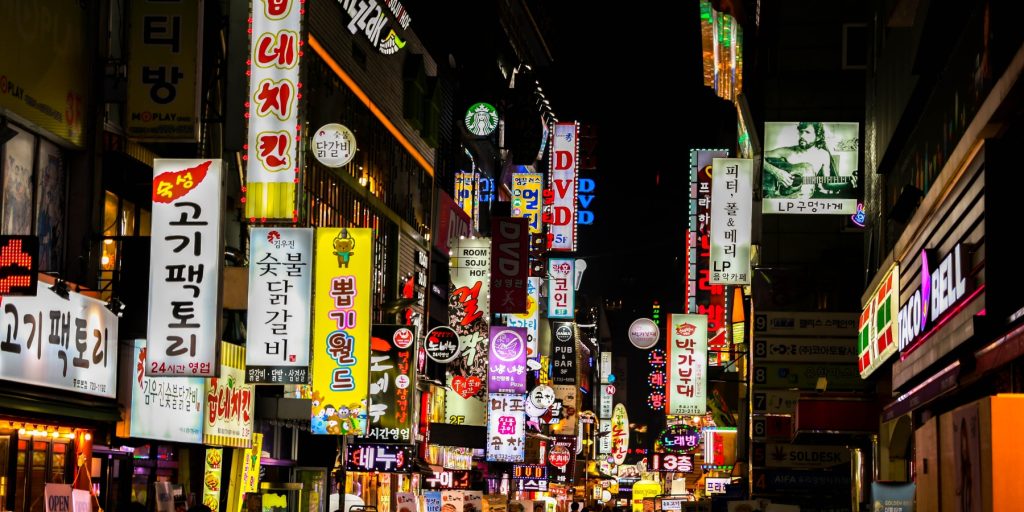
Are you having a peek around Seoul and are looking for the hottest bars right now? Look no further! These are the top 3 cocktail bars to experience classic cocktails and state-of-the-art concoctions.
- Whynot Cocktail Bar. Go here if you’re ready to experience an astounding selection of cocktails and taste some of the best whiskies in the world. We recommend trying the Rose Petal cocktail, flavoured with lychee and elderflower.
- Pussyfoot Saloon. Modelled after a vintage train carriage, Pussyfoot Saloon is a modern drinking hub. Here, you’ll be able to taste delicious classics alongside innovative creations like the Sherry Flip, which features sherry and nutmeg powder. Pussyfoot Saloon also hosts bartenders from around the world who create unique cocktail menus inspired by their home countries.
- Alice Cheongdam. If you’re looking for an opulent and sophisticated atmosphere, Alice Cheongdam will welcome you with sofas, dark wood panelling and elegantly dressed windows. The drinks menu features offbeat recipes with daring flavours, like the Hippity-Hoppity made with vodka, elderflower and aloe vera, served in a rabbit-shaped cup.
Korean cocktails fusion
Alongside Soju & co., Korea is developing a mixology culture of its own. Let’s have a look at the trendiest Korean fusion cocktails that we predict will become a hit sooner than you think.
Soju Mojito
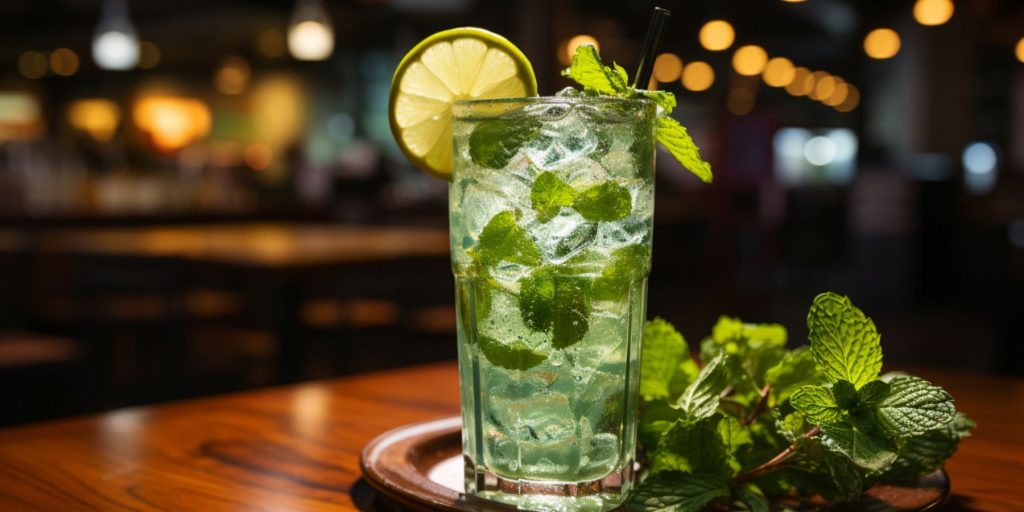
This Korean take on the classic Mojito substitutes rum with soju for a smooth and light version. The blend of spirit, mint, lime, and soda water makes it the perfect drink for warm days or to sip on a relaxing evening.
Soju Sunrise
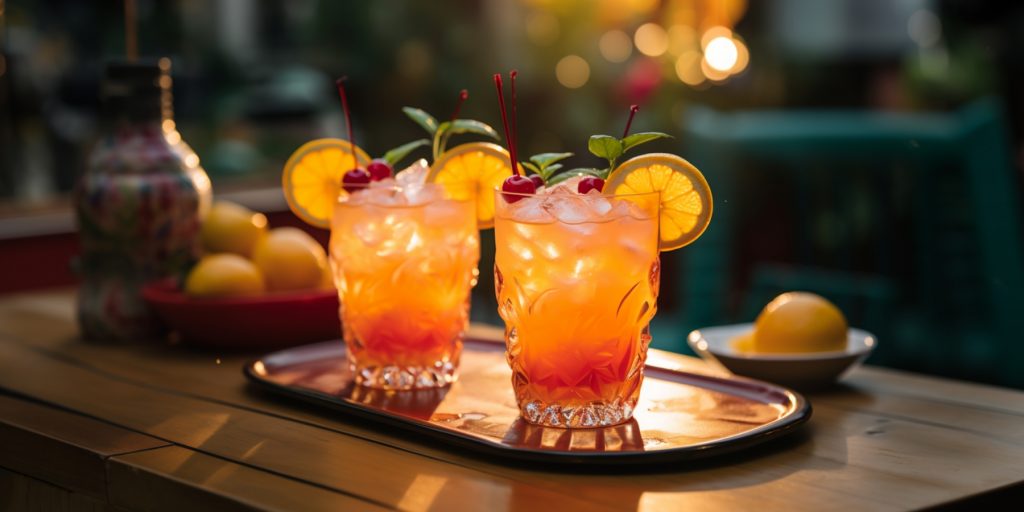
Soju is also the star of this take on the Tequila Sunrise. You’ll simply need soju, orange juice, and a splash of grenadine to create a layered cocktail that mimics the colors of a sunset in Seoul.
Looking for more Soju-based cocktail recipes? We’ve got you covered in our guide.
Honey Makgeolli
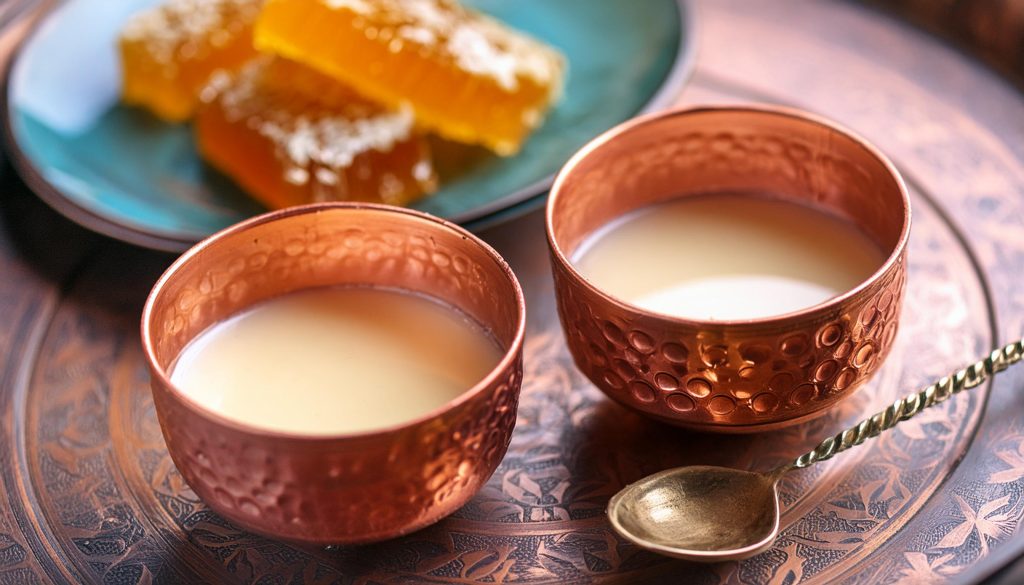
The Honeycomb Makgeolli cocktail is a sweet sensation on TikTok. This delightful drink combines traditional rice wine with the sweetness of honeycomb. It has a creamy texture, and it offers a rich blend of flavours creating an indulging dessert cocktail experience. If you can’t find honeycomb and don’t have any beekeeper friends, go ahead and use store-bought natural honey instead.
Makgeolli Margarita
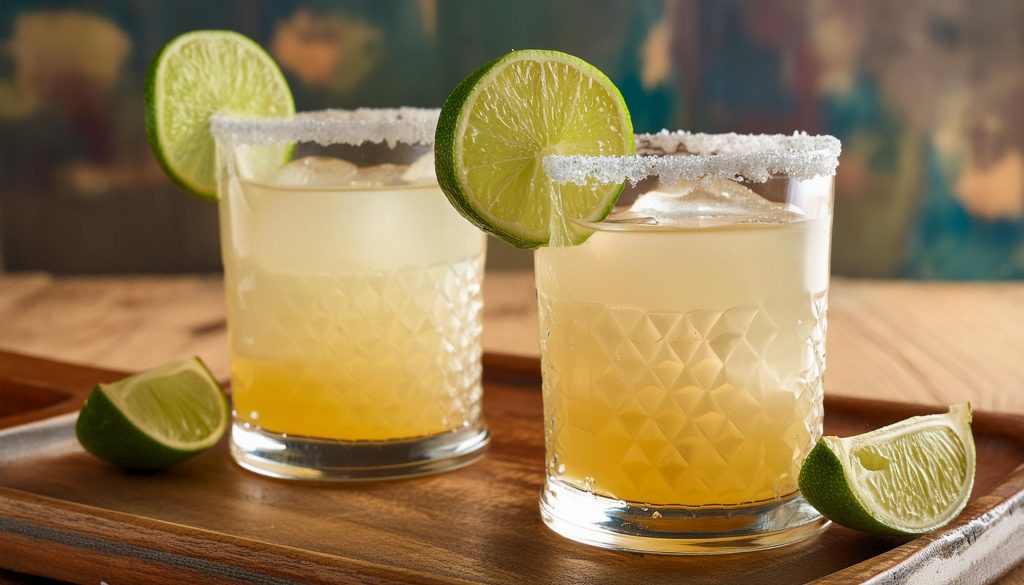
The Makgeolli Margarita, or Mageollita, is a fabulous summer drink and the Korean version of a Margarita. It follows the classic recipe but adds 1 cup of makgeolli for an intense flavour layering. You can substitute agave syrup for maesil cheong (plum syrup) for an authentic Korean experience!
There you have it, all you need to know about Korean drinking culture, including our experts’ insights. Now, go get some soju, maekju, and kimchi and start planning your next Korean-themed get-together. Geonbae!
